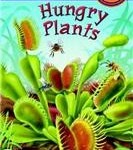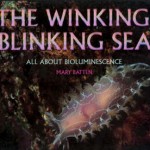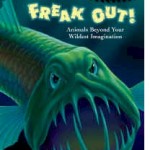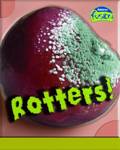October in the Green Room: students will have the opportunity to explore nature in its most bizarre form! The creepiest and crawliest of nature will be sure to get all students in the Halloween spirit!
Week 1: Carnivorous Plants
 Week 1 in the Green Room will be focused on learning about carnivorous plants. The week’s lessons will be centered around four distinct types of carnivorous plants: the Venus flytrap, Bladderwort, Pitcher plant and Sundew. The book, Hungry Plants by Mary Batten, will be used to introduce students to the idea of carnivorous plants as well as each new individual carnivorous plant throughout the week. The books, "Plants Bite Back" by Richard Platt and "Plants that Eat Animals" by Allan Fowler, will also be resources used throughout the week.
Week 1 in the Green Room will be focused on learning about carnivorous plants. The week’s lessons will be centered around four distinct types of carnivorous plants: the Venus flytrap, Bladderwort, Pitcher plant and Sundew. The book, Hungry Plants by Mary Batten, will be used to introduce students to the idea of carnivorous plants as well as each new individual carnivorous plant throughout the week. The books, "Plants Bite Back" by Richard Platt and "Plants that Eat Animals" by Allan Fowler, will also be resources used throughout the week.
Week 1 Sub Theme Objectives:
1. Be familiar with the term carnivorous plant.
2. Be familiar with four types of carnivorous plants (the Venus flytrap, the Bladderwort, the Pitcher plant and Sundews) and the types of insects each consume.
3. Understand that carnivorous plants can not harm humans.
Week 2: Bioluminescence
 Week 2 in the Green Room will focus on introducing students to the phenomenon of bioluminescence through the use of the book, "The Winking, Blinking Sea" by Mary Batten.
Week 2 in the Green Room will focus on introducing students to the phenomenon of bioluminescence through the use of the book, "The Winking, Blinking Sea" by Mary Batten.
Week 2 Sub Theme Objectives
1. Be familiar with the term bioluminescence.
2. Be familiar with at least two bioluminescent animals.
3. Be familiar with at least one method in how animals achieve bioluminescence.
Week 3: Shocking Species
 Week 3 in the Green Room will be focused on shocking animals and strange animal behaviors. We will be using the books, "Freak Out!" and "Gross Out!" by Ginjer Clarke to help us in our educational quest to learn more about these shockingly strange creatures!
Week 3 in the Green Room will be focused on shocking animals and strange animal behaviors. We will be using the books, "Freak Out!" and "Gross Out!" by Ginjer Clarke to help us in our educational quest to learn more about these shockingly strange creatures!
Week 3 Sub Theme Objectives:
1. Be familiar with at least one shocking species from each category (underwater, insect, reptile & amphibian, mammals & birds) and know how to accurately describe the species and its oddities.
Week 4: Decomposition
 The last week of the month will be focused on the concept of decomposition. We will start our week by reading the book "The Magic School Bus Meets the Rot Squad." This book details the process of decomposition and explains why it is so important to the life cycle. The book, "Rotters!" by John Townsend will also be used as a reference to for lessons. It has some fantastic photos that will be used to reinforce lessons that may deal with, for example, the insects that help in the decomposition process.
The last week of the month will be focused on the concept of decomposition. We will start our week by reading the book "The Magic School Bus Meets the Rot Squad." This book details the process of decomposition and explains why it is so important to the life cycle. The book, "Rotters!" by John Townsend will also be used as a reference to for lessons. It has some fantastic photos that will be used to reinforce lessons that may deal with, for example, the insects that help in the decomposition process.
Week 4 Sub Theme Objectives:
1. Be familiar with the term decomposition.
2. Be familiar with the term life cycle.
3. Understand why decomposition is so important to the life cycle.
Learning Goals
Life Science (level k):
- 1. Students know how to observe and describe similarities and differences in the appearance and behaviors of plants and animals Investigation and Experimentation: 1. Draw pictures that portray some features of the thing being described (first grade-level)
- Record observations on a bar graph (level k)
Number Sense:
- Use concrete objects to determine the answers to addition and subtraction problems for two numbers that are each less than 10
Numbers and Shapes:
- Recognition, Writing Numbers and Drawing Shapes The learning of numbers and shapes is worked into each and every lesson that students participate in in the Green Room. Teachers plan “Number and Shape Opportunities” so that students have ample time to practice number and shape recognition, number writing and shape drawing throughout the month.



